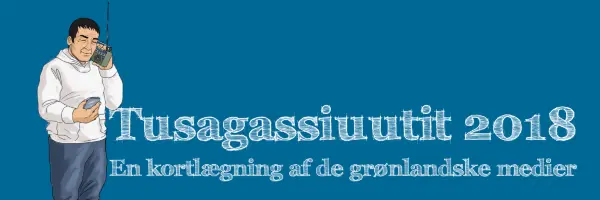Mapping the media in Greenland
Knowledge about the media & content
We analyse all news reports in Greenlandic news media on selected days. In this way, for example, we can explain whose voice is heard and whose is not - what become news, and what does not.
Database
All of our data is collected in a database that can be used for later investigations.
State of the Greenlandic media?
Here we look at which media exist, how big they are, how their finances look, who owns them, etc.
We examine every two years
We repeat our survey every two years - so we can show how the Greenlandic media structure and the Greenlandic media content evolve.
Report easy to read
24 October we present the report "Tusagassiuutit 2018 - mapping the media in Greenland".
About the project
In Greenland, national media are a key prerequisite for democracy. The media are a crucial information channel and a means of linking the scattered population together. For the same reason, the Greenlandic media are often the subject of debate.
The newly launched research project ''Tusagassiuutit 2018 " will contribute to this debate with knowledge about the media and the media content. The project will do this by gathering and systematically analyzing all news in Greenlandic news media on selected days. This will, for example, illuminate who makes themselves heard and who does not, what makes news and what does not.
This is done by means of a quantitative content analysis of the content in the news media based on the research question: What characterizes the content of the Greenlandic news media in 2018?
Besides this, Tusagassiuutit 2018 will also contain a detailed mapping of the Greenlandic media landscape (what media are present, how big are they, how does their economy look, who owns them etc.).
Data from the project will be collected in a database that can be used for later studies by e.g. future graduate and PhD students, and be part of teaching materials as part of an increased research based journalism education.
The survey will be repeated every two years, in order to demonstrate how the Greenlandic media structure and the Greenlandic media content develop. The results of the study is to be published in a reader-friendly report. The first report will be published in the fall of 2018.
















 FACEBOOK
FACEBOOK LINKEDIN
LINKEDIN Copy link
Copy link
